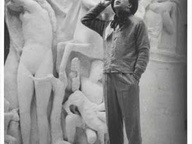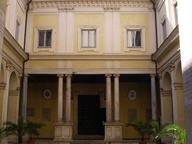The merits of women. Profiles of the female art and history from the documents in the State Archives of Venice (XV-XVIII centuries)
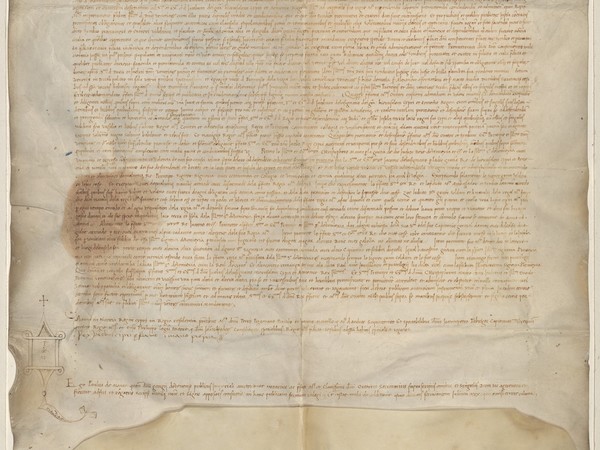
1492. Asolo. Lettera di Caterina Cornaro con sottoscrizione autografa, diretta a Vittore Trevisan priore di San Cipriano di Murano
From 06 Marzo 2014 to 06 Giugno 2014
Venice
Place: Mocenigo Palace
Address: Santa Croce 1992
Responsibles: Alessandra Schiavon
Telefono per informazioni: +39 041 721798
E-Mail info: info@fmcvenezia.it
Official site: http://www.visitmuve.it
Once again this year in the wake of well-established tradition of the two previous editions, the State Archives of Venice adheres to the program of events offered by the City of Venice to reconsider and give value to the presence of women in society .
It makes the story that keeps drawing course , always open to the heritage of scrolls, public and private papers , maps and drawings that he inherited from the great archives of the Serenissima hosted this year in the sumptuous setting of Palazzo Mocenigo at San Stae, from March 6 to June 6.
For this 2014 edition is intended , among other possible routes, to highlight - in a chronologically sequential and collective dimension - some of the many female figures who helped to write the history of Venice, famous women and celebrated by historians and chroniclers , correspondents and fellow-artists; women who have excelled in the arts, in composing poetry or painting or music; women from the splendor of the Ducale Palace or forced from the microcosm of a monastery were able to leave some fragment of itself memorable.
They are famous women such as Bianca Cappello , an illustrious patrician lineage , star of a scandalous elopement with a Florentine art without either side, but quickly reinstated , and awarded the title of ' et especially true daughter of our Republic " , with Machiavellian opportunism , when to impalmarla with regular and lavish wedding will be October 12, 1579, the Grand Duke of Tuscany, Francesco de ' Medici; or Caterina Cornaro, who was married to James de Lusignan King of Cyprus in the autumn of 1572, but then the latter's death , diplomatically overthrown by the will of the Serenissima aimed to ensure greater control over the island - buttress of great strategic importance in the heart of Mediterranean and subject to the expansionist ambitions of others - and brought her home and rewarded with a kingdom of idleness and art in the beautiful fortress of Asolo , but always continue to be queen, "Queen Katerina " as evidenced by his signature in the documents also followed, such as wills autograph , exhibited in the show.
Or even famous women in the world of literature and poetry as Veronica Franco , which we will expose the transcripts of the trials suffered by the Inquisition and the Venetian for unorthodox practices , such as invoking devils and angels , "to make games and knavery " and " to fall in love some todeschi " or Cassandra Fedele and Lucrezia Marinelli and Modesta Da Pozzo , who treated between 1588 and 1592 the opera " the merit of women ," published posthumously in 1600 , hence the title of the exhibition.
But there are also lesser-known figures such as Maddalena Scrovegni in Padua was born around 1356 and died in Venice in 1429 , the grandson of Henry whom we owe the famous Arena Chapel in Padua , which exposes the beautiful testament entirely autograph in which it has claw his home , located in the district of Santa Margherita, after his death become a home ( college ) for women, good life and fame who want to live together, or Paleologhina Anna Notaras , a descendant of the noble house Byzantine in escape to Italy and then to Venice after the fall of Constantinople, which allocates his wealth to found a church grechacum so that it is always et in perpetuum et Greek Greek priests , and thus marks the act of foundation of St. George of the Greeks.
In addition to individual figures , we wanted to broaden our gaze to the collective dimension of these female presence : those testimonies that is represented by the events of entire ethnic groups , as in the case of Albanian women - highlighted by Lucia Nadin - exiled from their homeland conquered by Ottoman forces , and landed in Venice after many adventures : here will be received with all the honors here and will be financially supported by the grant of a monthly donation until the end of their lives.
Still we wanted to watch , even nell'episodicità discourse necessarily bound by the limits of time and space exhibition , the collective social dimension: for example, represented by the unique Venetian experience all of the "daughters of the choir " active in the big four " Hospitals " citizens , in particular that of the Pieta and the Incurable , from whose archives emerge names and musical skills; or even the " Dogaressas " as Morosina Morosini , who is bringing in his marriage celebrated in 1560 with the future Doge Marino Grimani castle of San Vincenti in Istria , which will expose two drawings of the sixteenth century; or Loredana Marcello (1518-1572) that her husband , the Doge Alvise I Mocenigo ° , remember in his will autograph with poignant tenderness , speaking of ' " greatly extraordinary love that brought them together in the course of their lives.
Yet been investigated within the family as a collective dimension in the case of Tintorette or Tarabotti : Proposal latter particularly fascinating and innovative drawn up by the specialists of their respective fields of research , Melania Mazzucco and Francesca Medioli that came out from the usual paths of biography individual to develop a new interpretation played in terms of cultural transmission within a specific family : transmission of artistic excellence in the home with the daughters of Jacopo Tintoretto, Marietta and Girolama and Lucrezia, they become respectively Perina Sister and Sister Ottavia that embroidered on a silk altar frontal depicting with vivid color and exceptional attention to detail of the Crucifixion painted by his father for the Scuola Grande di San Rocco.
And the transmission of culture in a broad sense Tarabotti home , where not only Elena / Archangela in mid- seventeenth century writes and composes , while the cloister of the monastery of Sant'Anna di Castello, accusatory works dramatically as Hell nun and father against Tyranny forced monastic , but also his sister Catherine Agnes, as a student of the date Padovanino , tried to be realized in the world of painting , as attested by some contemporary evidence , like those of Marco Boschini "Paper of the picturesque voyage ."
The exhibition, conceived and curated by Alessandra Schiavon of the State Archives of Venice, exhibits about 50 precious original documents, and has used as processing of the search path of the contribution of historical and writers such as
Melania Mazzucco and Adriana Chemello , Medioli Francesca and Federica Ambrosini , Dorit Raines and Lucia Nadin Gullino and Joseph , to whom we owe the specific biographical study.
It makes the story that keeps drawing course , always open to the heritage of scrolls, public and private papers , maps and drawings that he inherited from the great archives of the Serenissima hosted this year in the sumptuous setting of Palazzo Mocenigo at San Stae, from March 6 to June 6.
For this 2014 edition is intended , among other possible routes, to highlight - in a chronologically sequential and collective dimension - some of the many female figures who helped to write the history of Venice, famous women and celebrated by historians and chroniclers , correspondents and fellow-artists; women who have excelled in the arts, in composing poetry or painting or music; women from the splendor of the Ducale Palace or forced from the microcosm of a monastery were able to leave some fragment of itself memorable.
They are famous women such as Bianca Cappello , an illustrious patrician lineage , star of a scandalous elopement with a Florentine art without either side, but quickly reinstated , and awarded the title of ' et especially true daughter of our Republic " , with Machiavellian opportunism , when to impalmarla with regular and lavish wedding will be October 12, 1579, the Grand Duke of Tuscany, Francesco de ' Medici; or Caterina Cornaro, who was married to James de Lusignan King of Cyprus in the autumn of 1572, but then the latter's death , diplomatically overthrown by the will of the Serenissima aimed to ensure greater control over the island - buttress of great strategic importance in the heart of Mediterranean and subject to the expansionist ambitions of others - and brought her home and rewarded with a kingdom of idleness and art in the beautiful fortress of Asolo , but always continue to be queen, "Queen Katerina " as evidenced by his signature in the documents also followed, such as wills autograph , exhibited in the show.
Or even famous women in the world of literature and poetry as Veronica Franco , which we will expose the transcripts of the trials suffered by the Inquisition and the Venetian for unorthodox practices , such as invoking devils and angels , "to make games and knavery " and " to fall in love some todeschi " or Cassandra Fedele and Lucrezia Marinelli and Modesta Da Pozzo , who treated between 1588 and 1592 the opera " the merit of women ," published posthumously in 1600 , hence the title of the exhibition.
But there are also lesser-known figures such as Maddalena Scrovegni in Padua was born around 1356 and died in Venice in 1429 , the grandson of Henry whom we owe the famous Arena Chapel in Padua , which exposes the beautiful testament entirely autograph in which it has claw his home , located in the district of Santa Margherita, after his death become a home ( college ) for women, good life and fame who want to live together, or Paleologhina Anna Notaras , a descendant of the noble house Byzantine in escape to Italy and then to Venice after the fall of Constantinople, which allocates his wealth to found a church grechacum so that it is always et in perpetuum et Greek Greek priests , and thus marks the act of foundation of St. George of the Greeks.
In addition to individual figures , we wanted to broaden our gaze to the collective dimension of these female presence : those testimonies that is represented by the events of entire ethnic groups , as in the case of Albanian women - highlighted by Lucia Nadin - exiled from their homeland conquered by Ottoman forces , and landed in Venice after many adventures : here will be received with all the honors here and will be financially supported by the grant of a monthly donation until the end of their lives.
Still we wanted to watch , even nell'episodicità discourse necessarily bound by the limits of time and space exhibition , the collective social dimension: for example, represented by the unique Venetian experience all of the "daughters of the choir " active in the big four " Hospitals " citizens , in particular that of the Pieta and the Incurable , from whose archives emerge names and musical skills; or even the " Dogaressas " as Morosina Morosini , who is bringing in his marriage celebrated in 1560 with the future Doge Marino Grimani castle of San Vincenti in Istria , which will expose two drawings of the sixteenth century; or Loredana Marcello (1518-1572) that her husband , the Doge Alvise I Mocenigo ° , remember in his will autograph with poignant tenderness , speaking of ' " greatly extraordinary love that brought them together in the course of their lives.
Yet been investigated within the family as a collective dimension in the case of Tintorette or Tarabotti : Proposal latter particularly fascinating and innovative drawn up by the specialists of their respective fields of research , Melania Mazzucco and Francesca Medioli that came out from the usual paths of biography individual to develop a new interpretation played in terms of cultural transmission within a specific family : transmission of artistic excellence in the home with the daughters of Jacopo Tintoretto, Marietta and Girolama and Lucrezia, they become respectively Perina Sister and Sister Ottavia that embroidered on a silk altar frontal depicting with vivid color and exceptional attention to detail of the Crucifixion painted by his father for the Scuola Grande di San Rocco.
And the transmission of culture in a broad sense Tarabotti home , where not only Elena / Archangela in mid- seventeenth century writes and composes , while the cloister of the monastery of Sant'Anna di Castello, accusatory works dramatically as Hell nun and father against Tyranny forced monastic , but also his sister Catherine Agnes, as a student of the date Padovanino , tried to be realized in the world of painting , as attested by some contemporary evidence , like those of Marco Boschini "Paper of the picturesque voyage ."
The exhibition, conceived and curated by Alessandra Schiavon of the State Archives of Venice, exhibits about 50 precious original documents, and has used as processing of the search path of the contribution of historical and writers such as
Melania Mazzucco and Adriana Chemello , Medioli Francesca and Federica Ambrosini , Dorit Raines and Lucia Nadin Gullino and Joseph , to whom we owe the specific biographical study.
SCARICA IL COMUNICATO IN PDF
COMMENTI

-
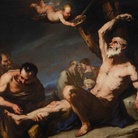 Dal 23 aprile 2024 al 01 settembre 2024
Bergamo | Accademia Carrara
Dal 23 aprile 2024 al 01 settembre 2024
Bergamo | Accademia Carrara
-
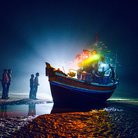 Dal 26 aprile 2024 al 09 giugno 2024
Reggio nell'Emilia | Sedi varie
Dal 26 aprile 2024 al 09 giugno 2024
Reggio nell'Emilia | Sedi varie
-
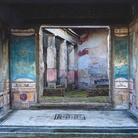 Dal 23 aprile 2024 al 16 giugno 2024
Roma | Castel Sant’Angelo
Dal 23 aprile 2024 al 16 giugno 2024
Roma | Castel Sant’Angelo
-
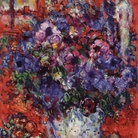 Dal 20 aprile 2024 al 27 ottobre 2024
Conversano | Castello Conti Acquaviva D'Aragona
Dal 20 aprile 2024 al 27 ottobre 2024
Conversano | Castello Conti Acquaviva D'Aragona
-
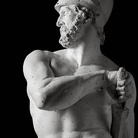 Dal 20 aprile 2024 al 29 settembre 2024
Possagno | Museo Gypsotheca Antonio Canova
Dal 20 aprile 2024 al 29 settembre 2024
Possagno | Museo Gypsotheca Antonio Canova
-
 Dal 20 aprile 2024 al 21 luglio 2024
Torino | Mastio della Cittadella
Dal 20 aprile 2024 al 21 luglio 2024
Torino | Mastio della Cittadella

